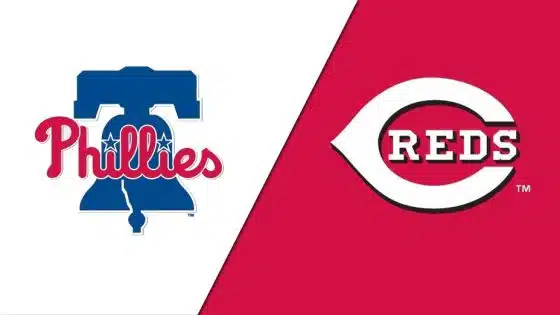By Josh Liddick, Sports Talk Philly editor
Career Accomplishments
- Eight-time All-Star (2002, 2003, 2005, 2006, 2008, 2009, 2010, 2011)
- AL Cy Young (2003)
- NL Cy Young (2010)
- Led MLB in wins in 2003 and 2010
- Pitched a perfect game on May 29, 2010
- Pitched a postseason no-hitter on October 6, 2010
*Awards were not factored into the formula
Career -efining Moment
There are two moments in Halladay's career that stick out to be the most "career defining." Both of them occurred in the same season. One in the regular season, one in the postseason.
Both are special, but one is just so much sweeter, especially because of how rare it is to obtain.
Roy Halladay's perfect game for the Phillies against the Florida (now Miami) Marlins on May 29, 2010 will go down as one of the most memorable moments in Phillies, Philadelphia sports, and baseball history.
For one day of the very long baseball season, Halladay reigned as literally the greatest athlete in the world, because of his poise, masterful pitchingand longevity. Pitching a perfect game is unlike so many other feats because of the rarity in it all.
The difficulty of retiring 27 batters in a row, not allowing a single hit or walk, is something that doesn't occur every day. In fact, to this date, there have only been 23 official perfect games in the over 140 years of baseball history.
Halladay had 203 wins over his big-league career. There will be a lot of moments that will define the career of the right-handed hurler, but the perfect game on that near-summer day in sunny Miami, Florida will stick out as the greatest moment of his career.
Reasoning for ranking
Halladay had 12 seasons where he posted a bWAR of two or higher, netting him 12 points. He had eight seasons of a bWAR of five or higher, considered to be All-Star level, netting him an additional 24 points. Lastly, he collected 15 points for his three seasons where he posted a bWAR of eight or higher, considered to be at the MVP level.
Like the Curt Schilling, who was slated at No. 9 of these rankings, Halladay's career win total of 203 is low for the success he had during his career. Halladay is currently 108th all-time in MLB wins. That gave him an additional one point for being in the top 200. His career WHIP of 1.178 is good for 102nd all-time in MLB history, gaining him an additional one point for being in the top 200 of that category.
Halladay earned two points for being in the top 100 for BB/9 with a 1.94, putting him at 79th all-time. Finally, his K/9 is 155th all-time, with a career 6.93, gaining him an extra one point for being in the top 200 all-time.
Halladay's final total was 56 points, putting him seven below the man who beat him out at No. 7 on the list.
Previous Entries
- No. 25, Ryan Howard
- No. 24, Roy Oswalt
- No. 23, Kenny Lofton
- No. 22, Jimmy Rollins
- No. 21, Cole Hamels
- No. 20, Cliff Lee
- No. 19, Tony Perez
- No. 18, Bobby Abreu
- No. 17, Scott Rolen
- No. 16, Richie Ashburn
- No. 15 – Chase Utley
- No. 14 – Ryne Sandberg
- No. 13 – Dick Allen
- No. 12 – Jim Bunning
- No. 11 – Fergie Jenkins
- No. 10 – Jim Thome
- No. 9 – Curt Schilling
Explanation of scientific formula
The player rankings formula combines both traditional and advanced statistics/metrics and assigns a point total to each category.




